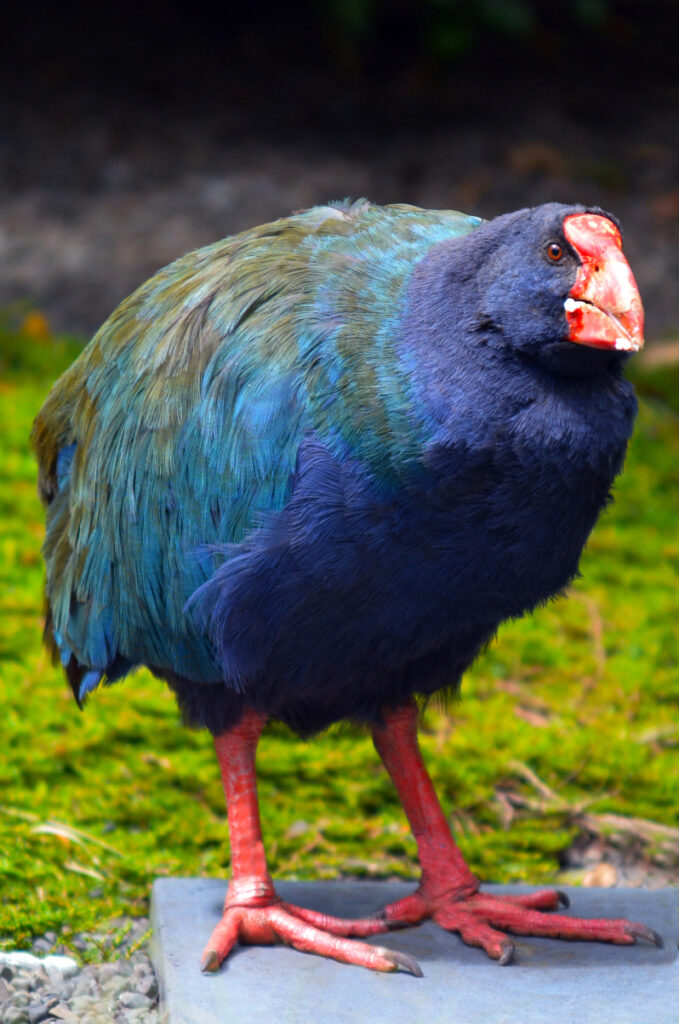
Introduction
The Takahe (Porphyrio hochstetteri), also known as the South Island Takahe, is one of New Zealand’s most iconic and beloved bird species. With its vibrant plumage and unique characteristics, the Takahe tells a compelling story of adaptation, survival, and conservation. Once thought to be extinct, these flightless birds are a symbol of resilience and a testament to the efforts made in protecting New Zealand’s unique wildlife.
Physical Characteristics
Takahe are large, flightless birds measuring about 60 cm in length. They have a stout body, short wings, and a distinctive beak that is both bright red and powerful. Their plumage is predominantly blue-green in color, with striking purple and red highlights, making them one of the most visually striking bird species in New Zealand. The Takahe’s strong legs and large feet are adapted for life on the ground, allowing them to thrive in grasslands and wetlands.
Habitat And Distribution
Historically, the Takahe roamed throughout New Zealand’s South Island and was once found in the North Island. However, habitat destruction, introduced predators, and hunting led to a dramatic decline in their numbers. By the mid-20th century, the Takahe was believed to be extinct, with the last confirmed sighting of a wild bird in 1898. Fortunately, in 1948, a small population was rediscovered in Fiordland, prompting an urgent conservation effort.
Today, Takahe are primarily found in protected areas, notably in Fiordland National Park and other sanctuaries where their natural habitats are safeguarded. Conservation efforts, including predator control and habitat restoration, have allowed their populations to recover, though they remain vulnerable.
Conservation Efforts
The resurgence of the Takahe is a remarkable success story for wildlife conservation in New Zealand. Following its rediscovery, organizations such as the Department of Conservation (DOC) implemented various strategies to ensure its survival. Key initiatives include:
Captive Breeding Programs: To increase the population, Takahe have been bred in captivity and reintroduced into the wild. This has helped establish new populations in areas that were once devoid of these remarkable birds.
Habitat Restoration: Efforts have been made to restore and protect wetland and grassland habitats, which are crucial for the Takahe’s feeding and nesting.
Predator Control: As flightless birds, Takahe are particularly vulnerable to introduced predators such as rats, stoats, and cats. Ongoing predator control programs are essential to safeguarding these birds from threats.
Public Awareness And Education: Raising awareness about the Takahe and its plight has garnered public support for conservation initiatives. Educational programs, eco-tours, and community involvement have helped build a network of passionate advocates.
Behavior And Diet
The Takahe feeds on grasses, leaves, seeds, roots, and occasionally insects. They are particularly fond of native plants such as the tussock grass and various herbs found in their habitats. Takahe are known for their foraging behavior, often grazing in groups, which also contributes to social bonding and protection against predators.
Their social structure is fascinating; they are generally monogamous, forming strong pair bonds that last for life.
Conclusion
The Takahe is not just a captivating species due to its unique appearance and behavior; it represents an ongoing narrative of recovery and hope in New Zealand’s conservation landscape. Described as a living symbol of New Zealand’s ecological heritage, the Takahe serves as a reminder of the challenges and triumphs faced in the battle to preserve biodiversity. As conservation efforts continue and habitats are restored, the future of the Takahe looks increasingly promising, allowing future generations to marvel at this extraordinary bird and its remarkable story.
